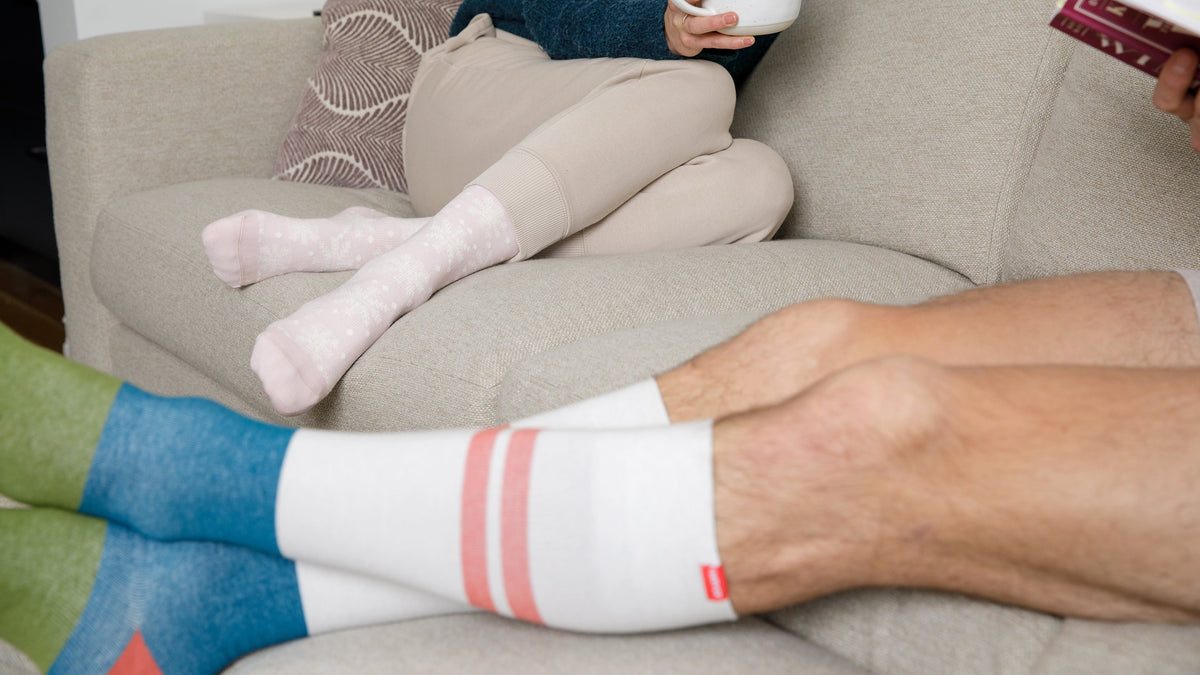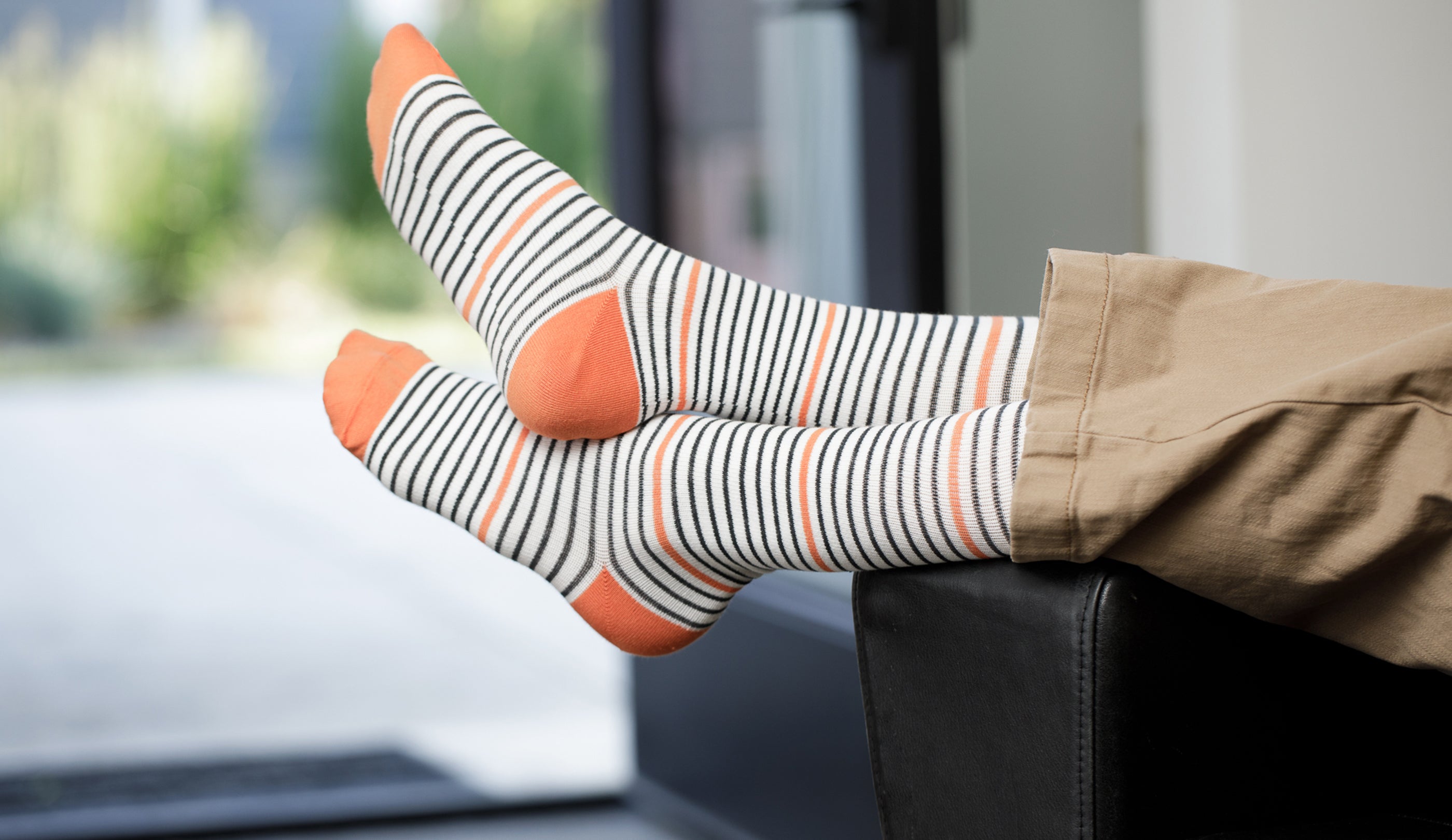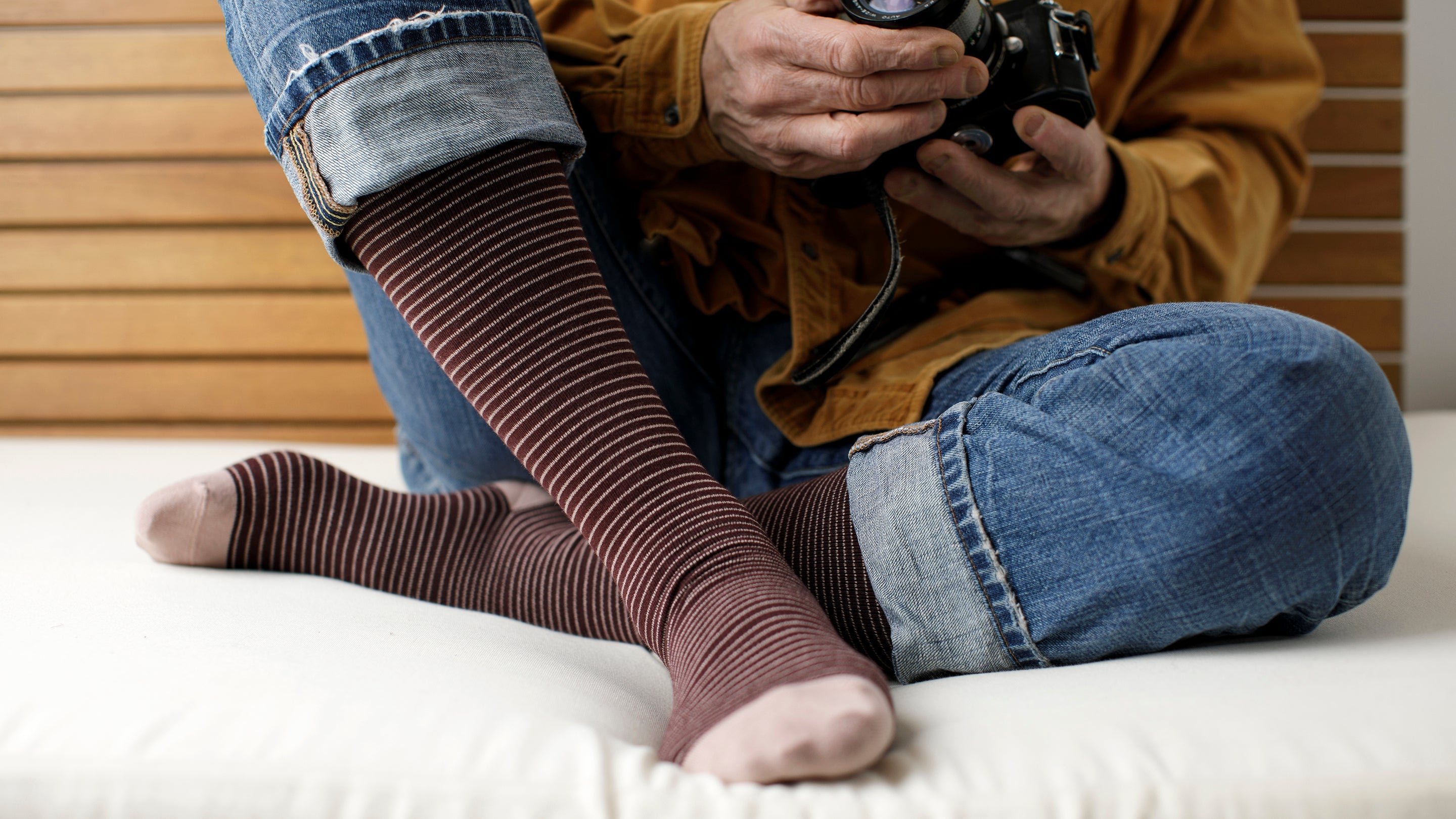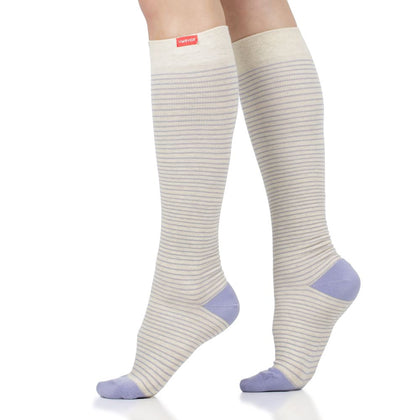

An embolism is the medical term for an obstruction or blockage in a blood vessel. In other words, an embolism occurs when anything restricts normal blood flow, which is commonly a blood clot. An embolism is dangerous because it can lead to health complications. The most severe and probably best known is a pulmonary embolism (when a blood clot travels to the lungs - a medical emergency that is life threatening).
The risk of developing an embolism is up to 40% following a major surgery. So, can you protect yourself from an embolism in an easy way? Like through clothing such as anti-embolism stockings?
Anti-embolism stockings are garments specifically designed to reduce the risk of blood clots in patients who have reduced mobility, for example when immobile while recovering from surgery. Studies show that anti-embolism or graduated compression stockings can be highly effective when worn correctly. This clinical report states that wearing anti-embolism or graduated compression stockings can reduce the risk of blood clots by 35% following a surgery.
In this article, we will look at the use of anti-embolism stockings and at how they differ from the more widely known compression socks. Read on to learn who should be wearing these garments and when you can transition from anti-embolism stockings to everyday compression wear.
What Are Anti-Embolism Stockings?
Anti-embolism stockings or socks are medical use garments that apply pressure on the legs to help increase circulation. Unlike graduated compression socks, they apply the same level of pressure throughout the area they cover. They are usually employed by medical professionals who will prescribe them when you’re bedridden, most often in hospital as part of recovery from surgery.
The goal of wearing anti-embolism stockings is primarily to prevent DVT (deep vein thrombosis) by reducing the risk of blood clots forming in the legs. The risk of DVT is higher in women. According to WebMD, up to 13% of people on bed rest may get DVT. The Mayo Clinic states that additional risk factors for developing DVT include:
- Surgery
- Age – specifically in people over 60
- Sedentary lifestyle
- Injury to veins
- Pregnancy – the increased pressure in the pelvis and leg veins increases the risk of blood clots for up to 6 weeks after giving birth
- Birth Control pills
- Smoking
- Health conditions – this includes cancer, heart failure, Crohn’s disease, or ulcerative colitis
- Genetics – key medical reports found indicate factor V Leiden as a key genetic condition that increases blood clotting
Another name for anti-embolism stockings is TED hose (thromboembolic deterrent hose). One additional feature of these stockings is that they leave one or several toes free, which helps doctors monitor the patient’s blood flow. They are not meant to walk around in and are strictly for non-mobile patients.
What Are Anti-Embolism Stockings Used for?
People that are post-surgery or have reduced mobility can benefit from anti-embolism stockings to avoid blood clots and deep vein thrombosis. They are typically prescribed in the phase of recovery or treatment where you’re unable to move around.
Preventing Blood Clots (DVT)
The key benefit of wearing TED hose or anti-embolism hosiery is the prevention of blood clots and DVT. They apply a light level of compression (less than compression socks, usually around 8-18 mmHg) that stimulates blood flow in the lower legs. This is crucial when you’re bedridden, since lack of movement can lead to the blood pooling at the periphery, which can cause blood clots. Blood clots are semi-solid masses of blood which can clog up the veins or arteries, or - more dangerously - travel to other parts of the body, such as the lungs. A pulmonary embolism is a life-threatening emergency and the extreme result of blood clots.
When you wear anti-embolism stockings, you significantly reduce the risk of blood clots and DVT. A clinical report points to the fact that their success rate (when used together with a range of prophylactic measures) can be over 80%.
Supporting Healthy Circulation
Through the pressure placed on your lower legs, anti-embolism socks or stockings help increase circulation. This not only reduces the risk of blood clots; it also contributes to the overall circulatory system health in the body. Without any blockages, blood flows naturally and helps keep all organs working well, maintaining your energy levels, and helping the body recover from illness or surgery.
Improving Recovery Time After Surgery
Better overall blood flow is beneficial for all bodily functions, and particularly for recovering after surgery or an illness. This is because blood delivers oxygen and nutrients throughout the body, reaching damaged or stressed tissues. This is an essential part of recovery.
At the same time, better circulation also helps remove waste products (like metabolites or toxins) from the body. Finally, it may help reduce inflammation and swelling. Overall, TED hose or anti-embolism socks facilitate blood flow, helping you achieve all these benefits and get better sooner, so you can start moving freely again.
How Do Anti-Embolism Stockings Work?
Anti-embolism stockings are designed to prevent blockages within the veins and arteries. By applying therapeutic pressure to the lower limbs, anti-embolism stockings stimulate blood flow in the area and back towards the heart. This reduces swelling and lowers the risk of forming blood clots, which can lead to deep vein thrombosis and other complications.
Unlike compression socks (which are often worn to help support muscles and circulation during physical activity as well as recovery), anti-embolism socks or stockings are meant to be worn by bedridden, immobile patients. The pressure they apply is light, but effective enough when lying in bed and not moving your legs much.
Anti-Embolism vs Compression Socks
There is generally a lot of confusion between anti-embolism or compression socks and TED hose. All these garments apply a level of therapeutic pressure to the limbs, with the goal of facilitating blood flow and reducing health risks. But they differ in a few ways:
- Compression socks can be graduated, which means they are tighter at the ankles and loosen up towards the knee. Anti-embolism socks apply an even amount of pressure from the foot to the knee.
- Compression socks are designed to be worn when you’re active as well as when you’re recovering. They come in a variety of materials and different compression levels. Anti-embolism socks are for bedridden, immobile patients, and are most often made from a blend of nylon and spandex.
- Compression socks (especially our Vim & Vigr range) are not just functional - they also offer a stylish garment for people looking to improve their circulation and prevent swelling, inflammation, and discomfort. Style is not a consideration for TED hose or anti-embolism socks, since you’re only meant to wear them during your hospital stay or bed rest.
If you’re looking for stylish compression for all-day wear, especially if you are required to stand or sit for long periods of time, check out our comfortable, great-looking designs in a variety of functional fabrics.

Who Should Wear Anti-Embolism Socks?
Anti-embolism socks are perfect for preventing the pooling of blood in your legs when you cannot move. This includes patients recovering from surgical interventions and a range of people with restricted mobility.
Post-Surgical Patients
The time it takes to recover from surgery varies depending on the operation and your medical history. However, most people will need to spend at least 3-4 weeks with very reduced or no movement. On average, medical research found that the risk of DVT is ~20% after a major surgery and ~40% after orthopedic surgery. This risk is linked with the lack of movement, which more serious when you have had a limb operated on.
Wearing anti-embolism socks in the first weeks of immobility – when you are not getting up or moving your legs at all – can lower the risk of blood clots and DVT, while also helping bring down inflammation and soreness.
Individuals with Restricted Mobility
Not being able to move your legs leads to a high risk of blood clots, varicose veins, DVT, and other complications. And this does not just happen after surgery. You may be prescribed bed rest in some cases during pregnancy or other medical conditions (such as infections or anemia). In all these cases, wearing TED hose or anti-embolism socks can be beneficial.
When to Transition to Everyday Compression Wear
Once your doctor says you can move around again, look into wearing compression socks or tights to reduce your risk of embolisms (aka blood clots) and to support blood flow as you engage in light forms of physical activity.
Wearing compression socks during your first walks and throughout the day when you’re still sitting or lying down for longer periods of time will stimulate blood flow. It also offers stronger support for the ankles and feet and a welcome massage for the muscles. Additionally, you may want to switch to compression socks upon your doctor’s recommendation, or if you continue to deal with circulatory issues (for example, experiencing swelling and/or tingling in your lower legs).

Anti-embolism stockings and socks are effective for the short-term prevention of blood clots and deep vein thrombosis. They are medical tools, designed to be used by bedridden or immobile patients, and not meant to be worn when walking or exercising. Once the risk of DVT decreases or you can move again, you will want to switch to knee-high graduated compression socks for support, blood flow boost, and a stylish garment, too. Browse our range and consult with a medical professional if you have any questions about what will work best for you.
References
Charles, T., Mackintosh, D., Healy, B., Perrin, K., Weatherall, M., & Beasley, R. (2011). Merino wool graduated compression stocking increases lower limb venous blood flow: a randomized controlled trial. Advances in therapy, 28(3), 227–237. Read it here.
Kujovich J. L. (2011). Factor V Leiden thrombophilia. Genetics in Medicine: Official Journal of the American College of Medical Genetics, 13(1), 1–16. Read it here.
Litvinov, R. I., & Weisel, J. W. (2022). Blood clot contraction: Mechanisms, pathophysiology, and disease. Research and practice in thrombosis and haemostasis, 7(1), 100023. Read it here.
Miller J. A. (2011). Use and wear of anti-embolism stockings: a clinical audit of surgical patients. International wound journal, 8(1), 74–83. Read it here.
Sachdeva, A., Dalton, M., & Lees, T. (2018). Graduated compression stockings for prevention of deep vein thrombosis. The Cochrane database of systematic reviews, 11(11), CD001484. Read it here.











